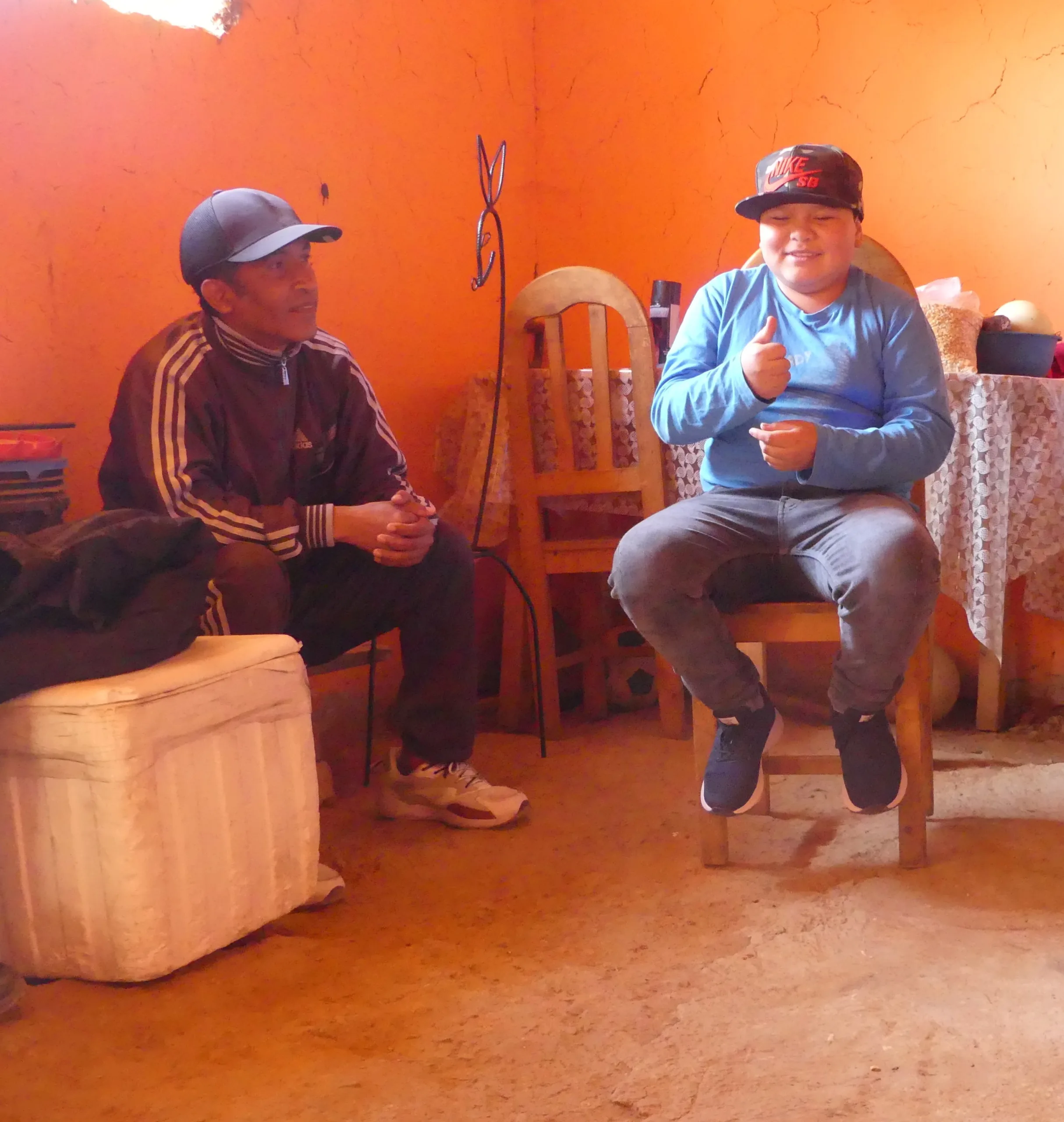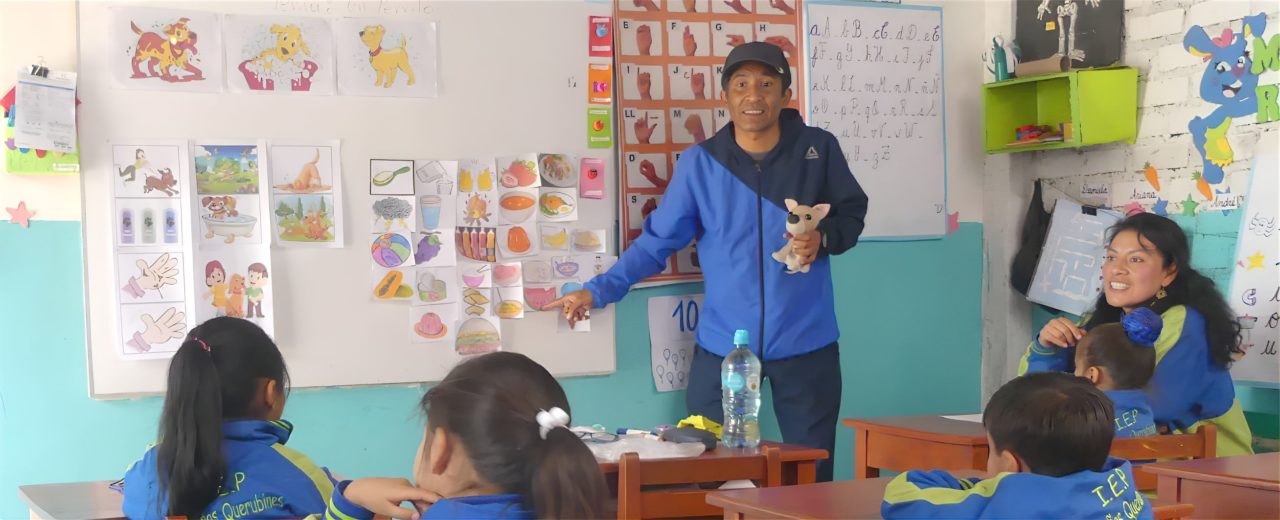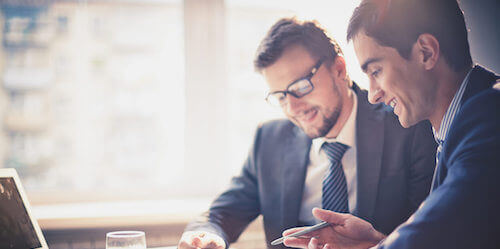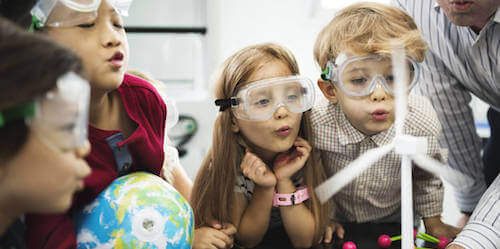 Talking hands in Cajamarca
Talking hands in Cajamarca
Inclusion and educational opportunities for young deaf people in the High Andes
Imagine you get your first textbook in primary school, but no one can teach you how to read it. This is what happened to Judith Rodríguez, 15 years old and deaf. She comes from Cajabamba, a remote province in the Peruvian high Andes of Cajamarca. From an early age, it was difficult for her to make herself understood. But she was inventive: she created her own language with simple hand signs. Her parents, impressed by her creativity, wanted her to have a chance at education. They heard about offers for the deaf in the regional capital Cajamarca and sent their youngest daughter there - a daring step. Among other things, Judith learned sign language in Cajamarca. Her self-confidence blossomed. Currently, she attends the fourth grade of the public secondary school, supported by sign language interpreters. She has many friends and does well at school.
Necessity
Access to public education and promotion of social integration of young deaf people in Peru
Activity
The partner NGO offers sign language lessons as well as accompanying offers at schools for deaf children
Countable effort
Number of deaf children and young people attending a mainstream school and successfully completing their school year
Result
Deaf children and young people improve their school performance and are integrated into their school classes
Systemic effect
Deaf people graduate from school, find a job they can live on and gain more quality of life in the long run
Background
Peru is the third largest country in Latin America. The Corona crisis, combined with a subsequent political crisis, hit the country hard (BMZ 2022). According to the World Bank, around 26 % of the Peruvian population lived below the national poverty line in 2021 (World Bank 2023). Although the government increased existing social assistance programmes, most poor families do not have access to them (Suarez Rojas, 2021). The crises also have a very negative impact on the education system. Only those with sufficient economic means can afford a good education (Gómez-Arteta & Escobar-Mamani 2021). Deaf children and young people have particularly poor access to education (Defensoría del Pueblo, 2020). Peruvian laws prescribe inclusion, i.e. pupils with disabilities should also have unrestricted access to education and attend mainstream schools (Bonilla, Cueto and Felipe 2021). In reality, however, things are different. The Ombudsman’s Office (“Defensoría del Pueblo”) warned in 2019 that 76% of public secondary schools and 83% of private secondary schools do not provide adequate educational opportunities for deaf students (Defensoría del Pueblo, 2020). According to the school census, 587 deaf students were excluded from primary and 350 from secondary education in 2019 alone (ibid.). There is no alternative for them. Against this background, the promotion of the integration and education of young deaf people in Peru is urgently needed.
The good deed
Most deaf people in Peru have a hard time participating in educational opportunities on an equal footing. This is where your good deed comes in. The non-profit association Asociación Holanda promotes the social participation of young deaf people and opens up educational opportunities. Thanks to your good deed today, sign language lessons can be offered in kindergartens for deaf and hearing people. Interpreters also translate lessons at primary and secondary schools. These measures help children and young people to participate in lessons without restrictions - they achieve learning success. In addition, the language development of children with residual hearing is promoted. Through these offers, the city of Cajamarca is developing into an oasis for the deaf in Peru. In the meantime, the first graduates of the educational programme of the Asociación Holanda are attending the university.

About Peru
Lima
Capital
34,049,588
Number of inhabitants
7,125.8
Gross domestic product per capita per year
0,762
Human Development Index
In the past, deaf Peruvians faced many challenges, such as not being able to legally marry until the late 1980s.
About the organization and further information
Association
GLS Zukunftsstiftung Entwicklung
Website
https://zukunftsstiftung-entwicklung.gls-treuhand.de/

Further information and source
- Bundesministerium für wirtschaftliche Zusammenarbeit und Entwicklung (BMZ). 2022. Peru: Entwicklungserfolge bedroht, Zugriff am 09.03.2022.
- Defensoría del Pueblo. (2020, 24. September). Defensoría del Pueblo: debe facilitarse el aprendizaje de la lengua de señas peruana y promover la identidad lingüística y cultural de las personas sordas. Zugriff am 09.03.2022
- Gómez-Arteta, I., & Escobar-Mamani, F. (2021). EDUCACIÓN VIRTUAL EN TIEMPOS DE PANDEMIA: INCREMENTO DE LA DESIGUALDAD SOCIAL EN EL PERÚ. Chakiñan, Revista De Ciencias Sociales Y Humanidades, (15), 152–165.
- Ramos Bonilla, G., Cueto, S., & Felipe, C. (2021). La educación de niños y niñas con discapacidad en el Perú durante la pandemia del COVID-19. Grupo de Análisis para el Desarrollo (GRADE). Documentos de Investigación, 119.
- Rojas, L. A. S. (2021). Between Life, the Curve and the Hammer Blow: Family, Poverty and Abandonment in the Time of COVID-19 in Lima, Peru. Open Anthropological Research, 1(1), 132-142.




